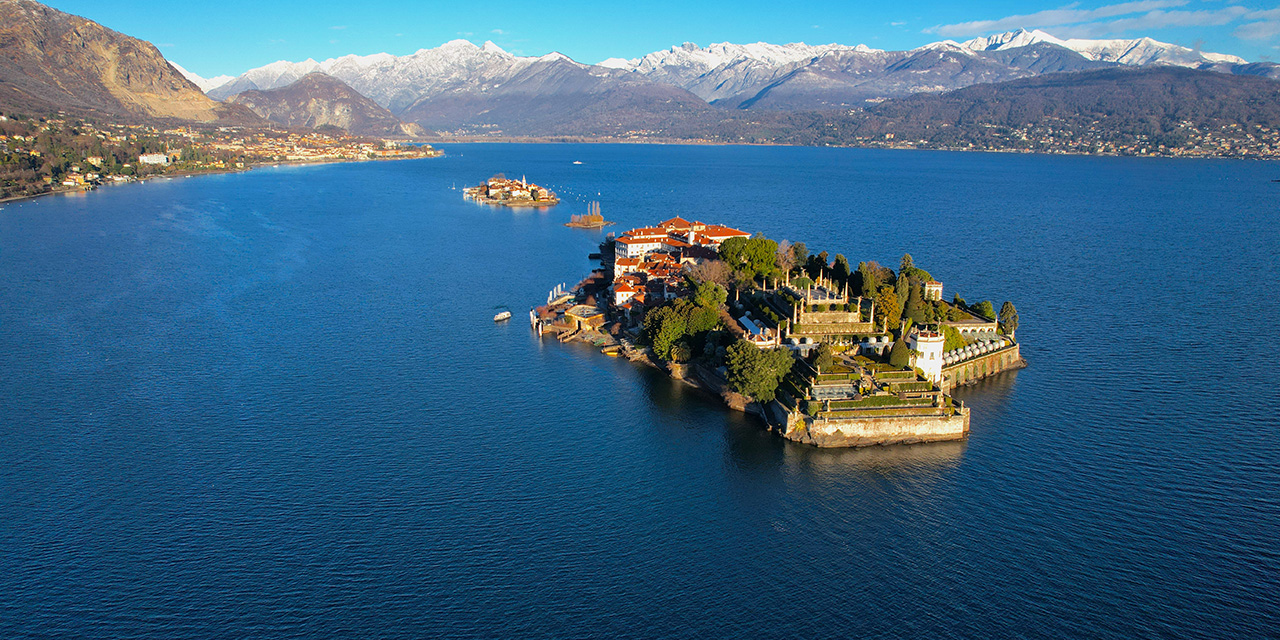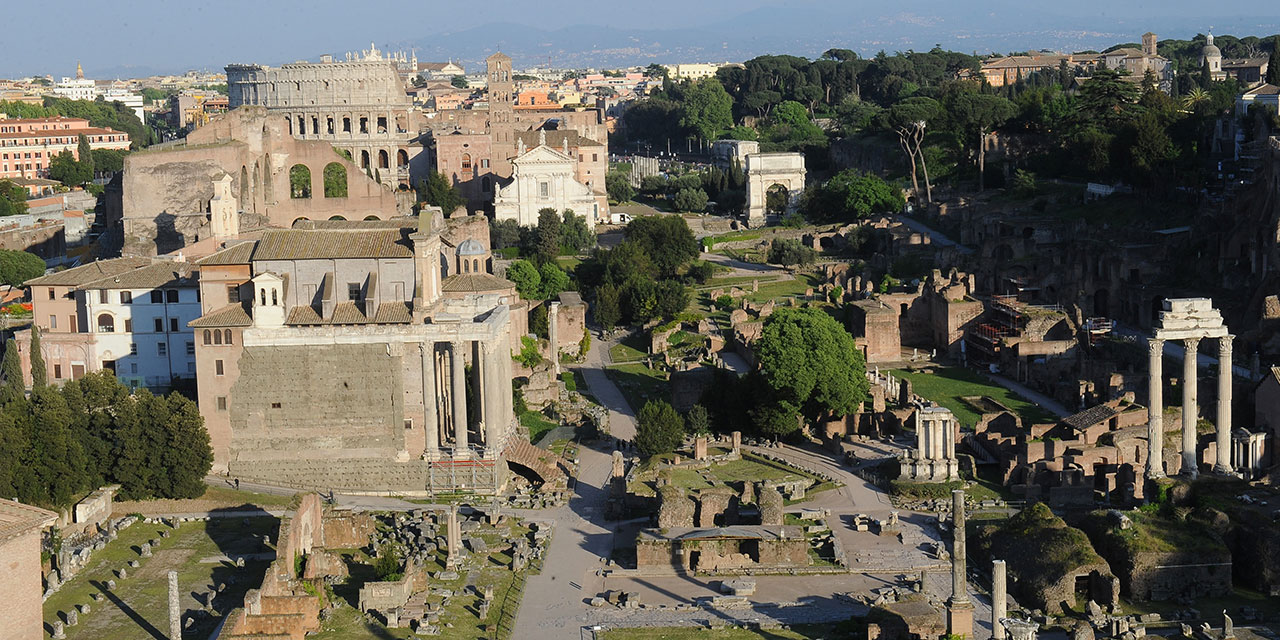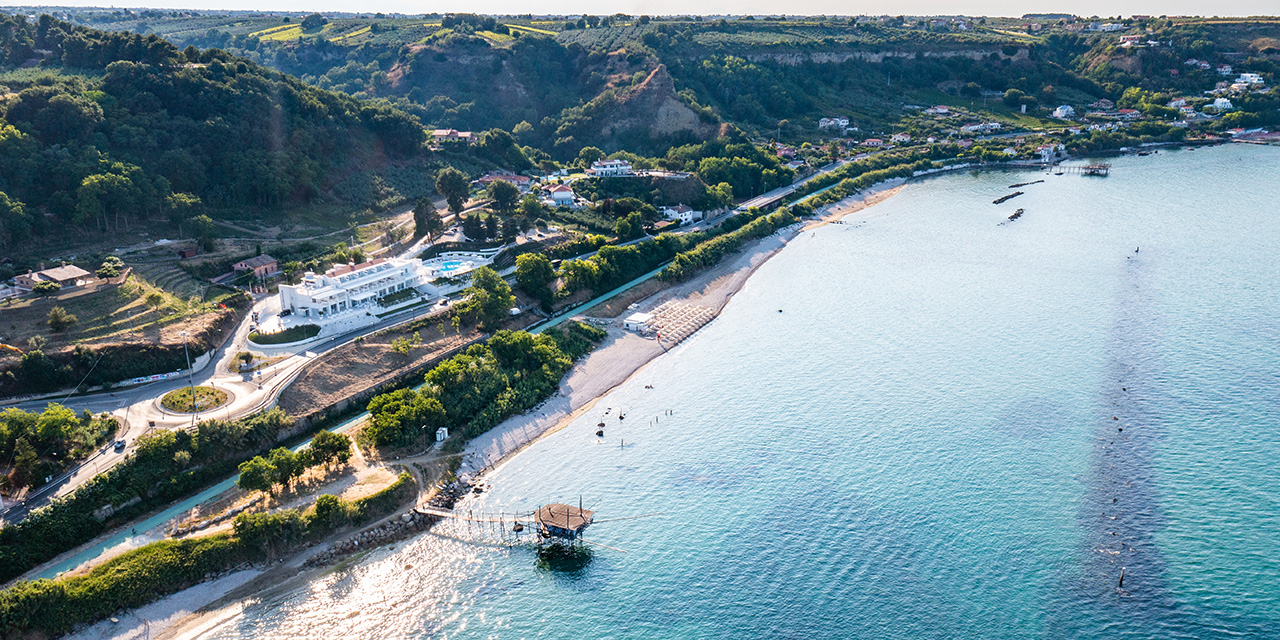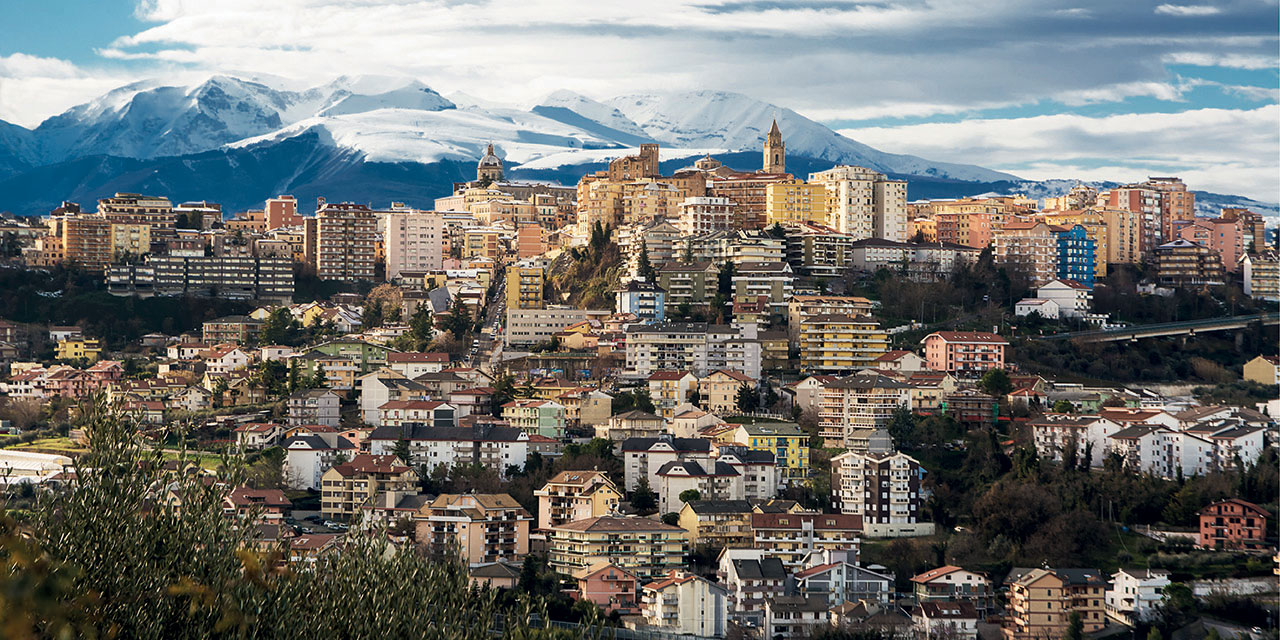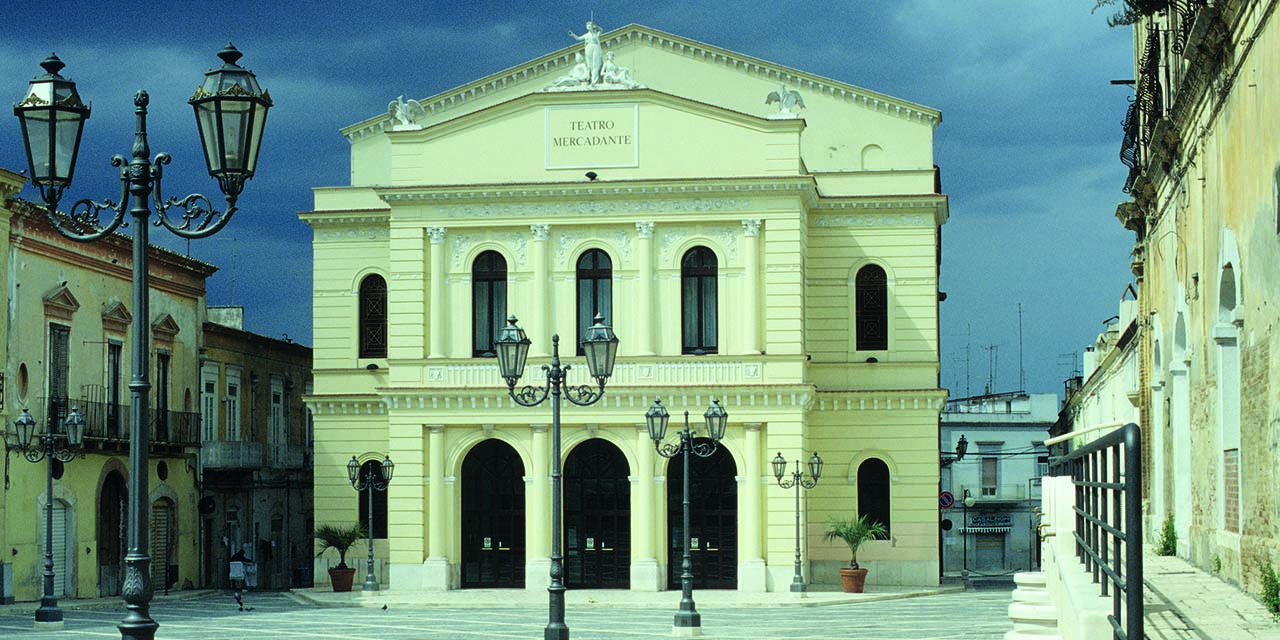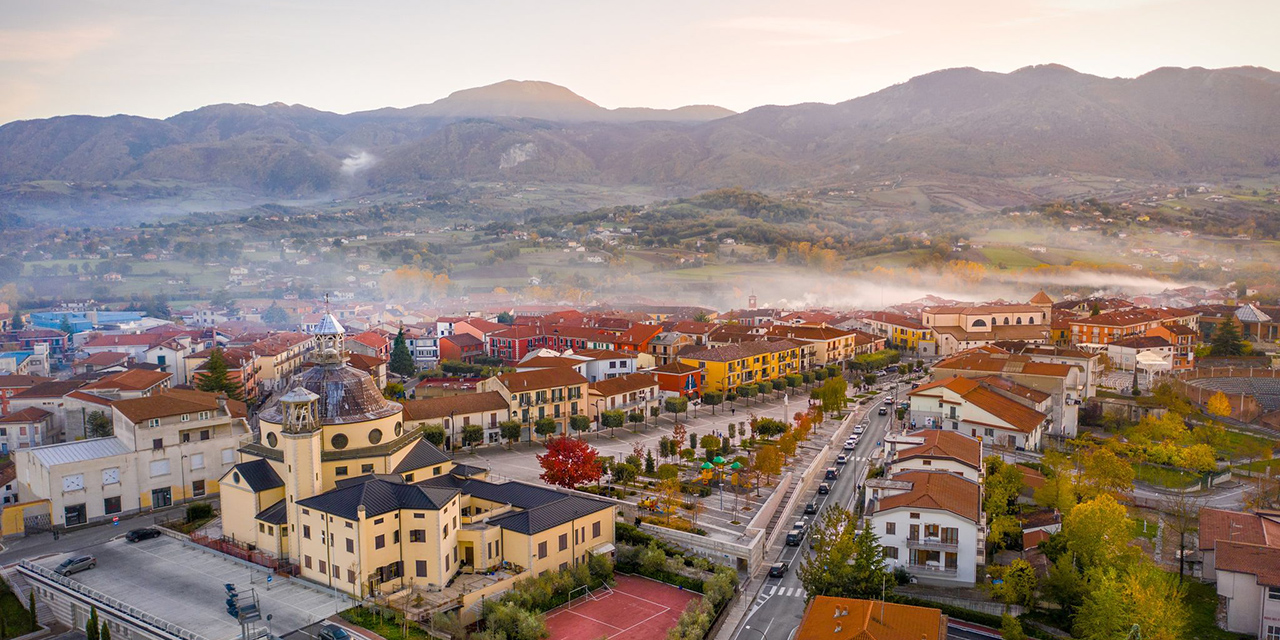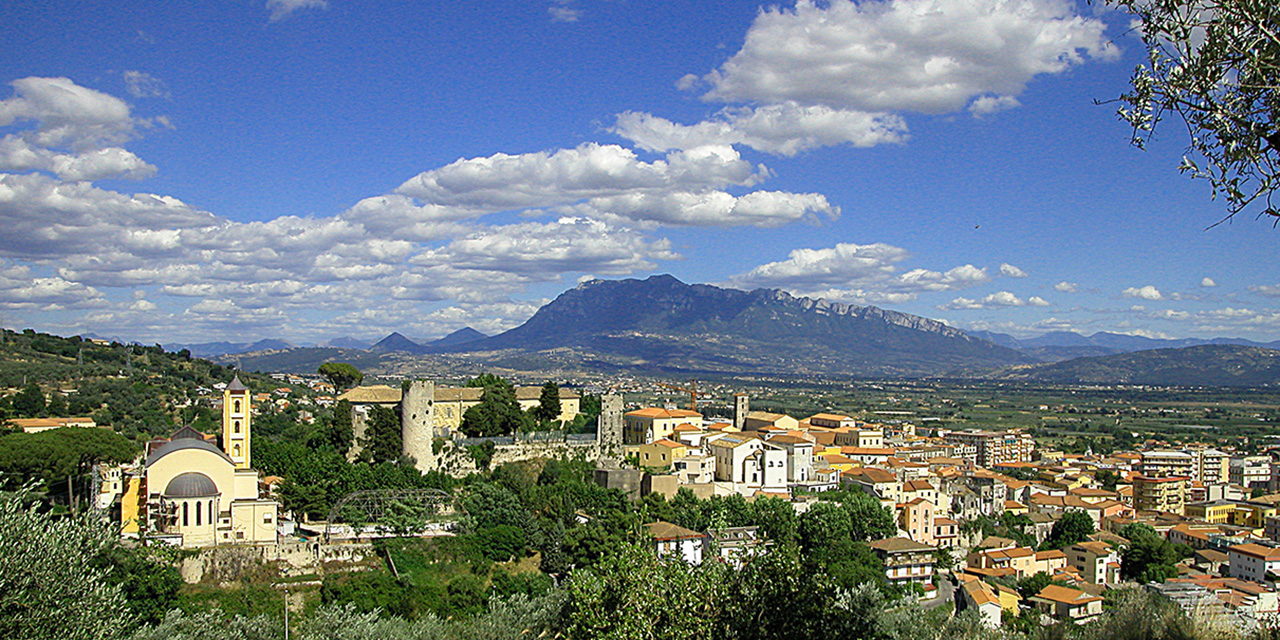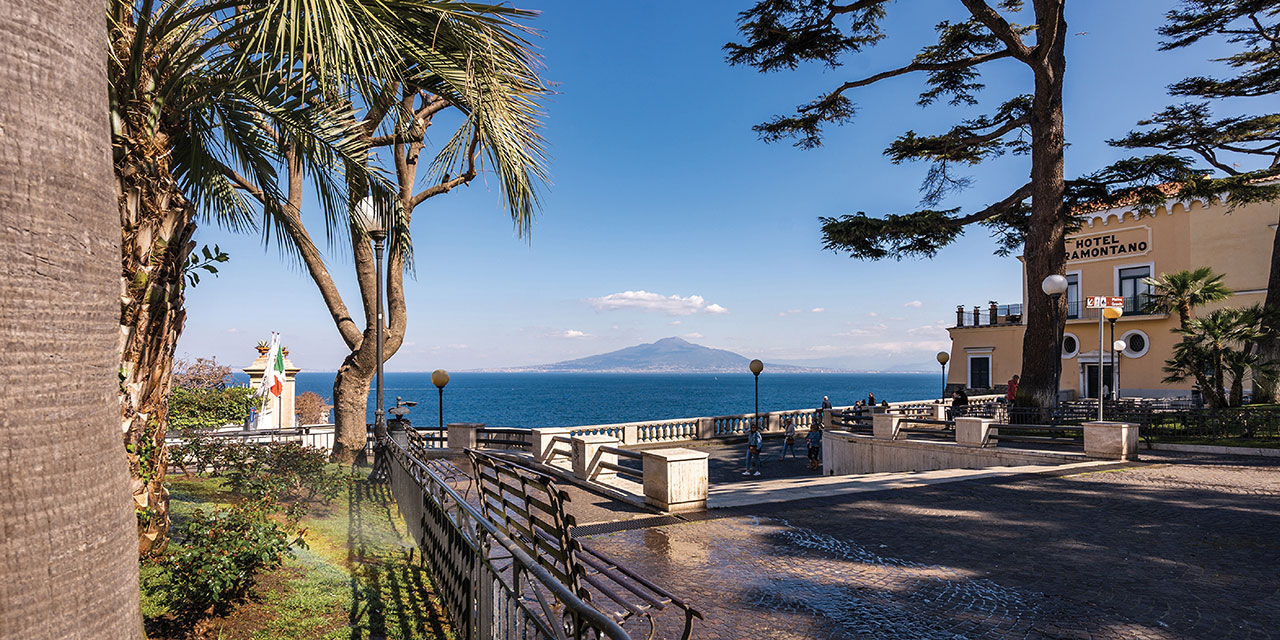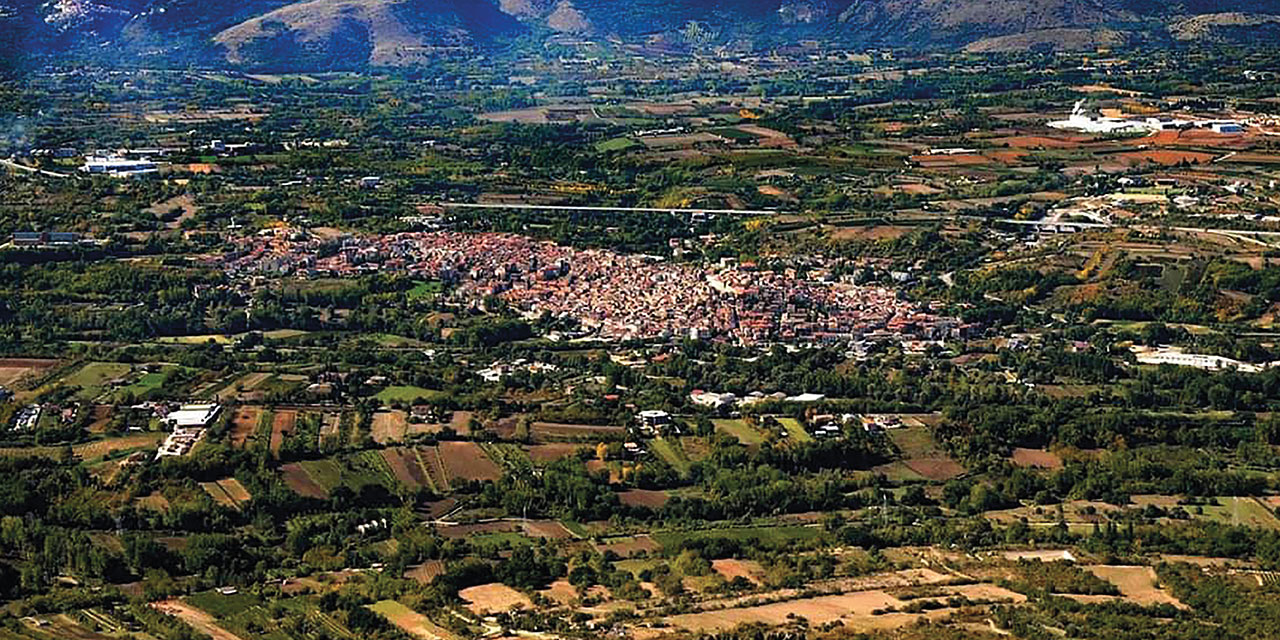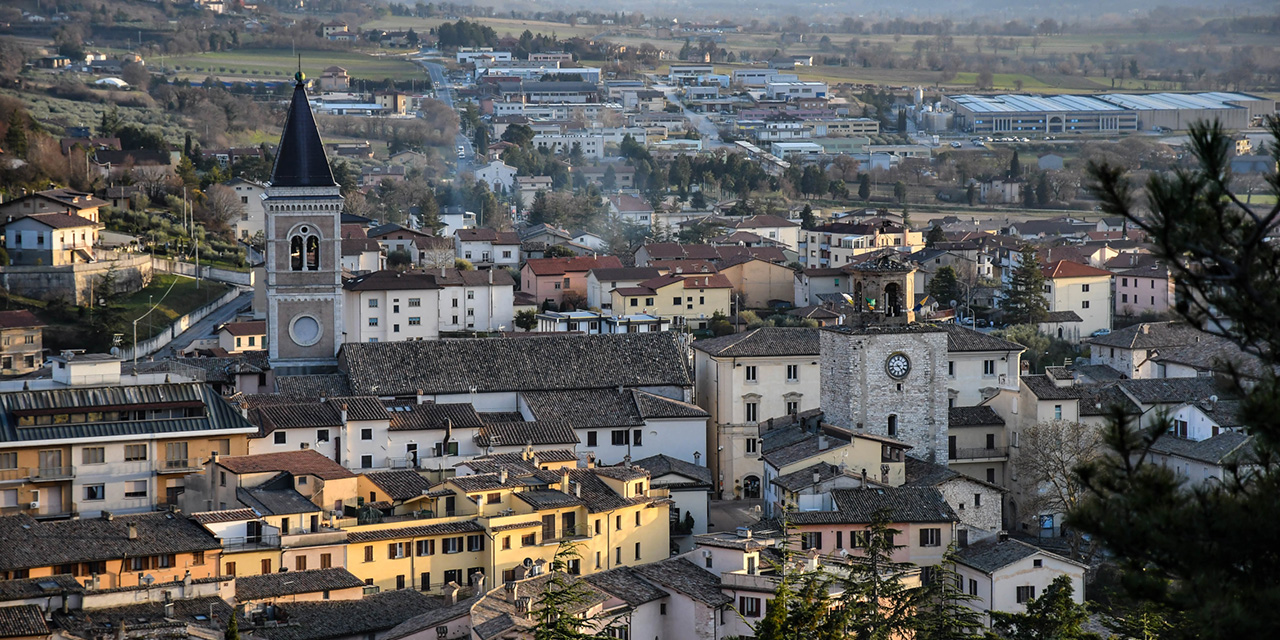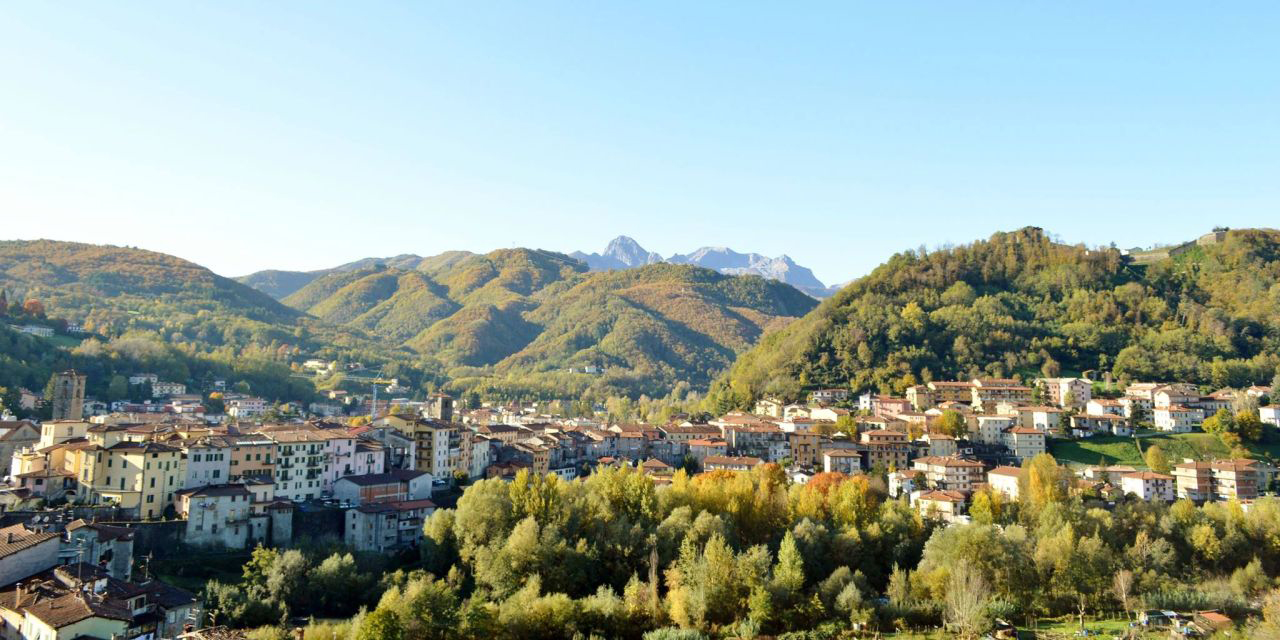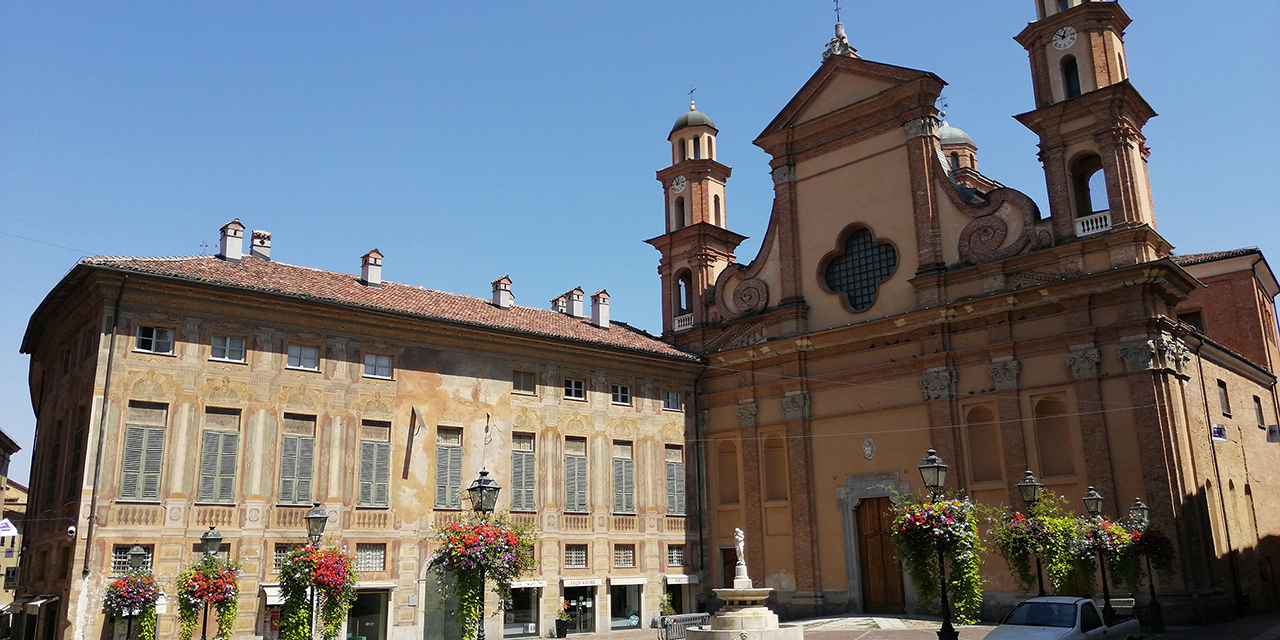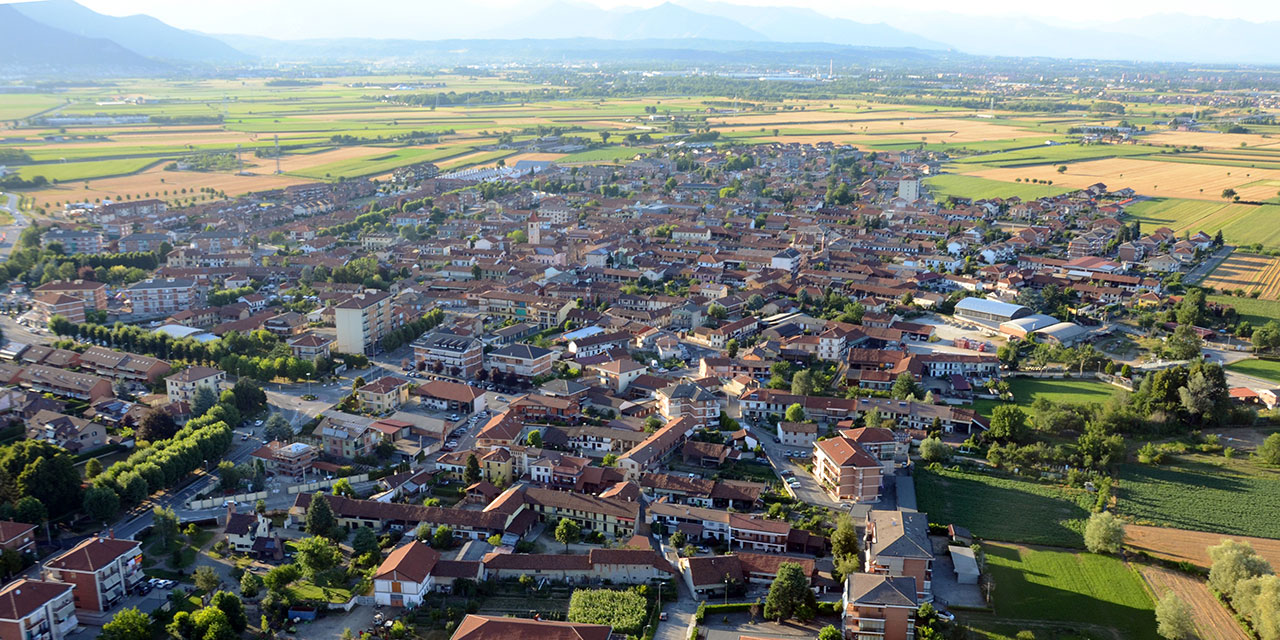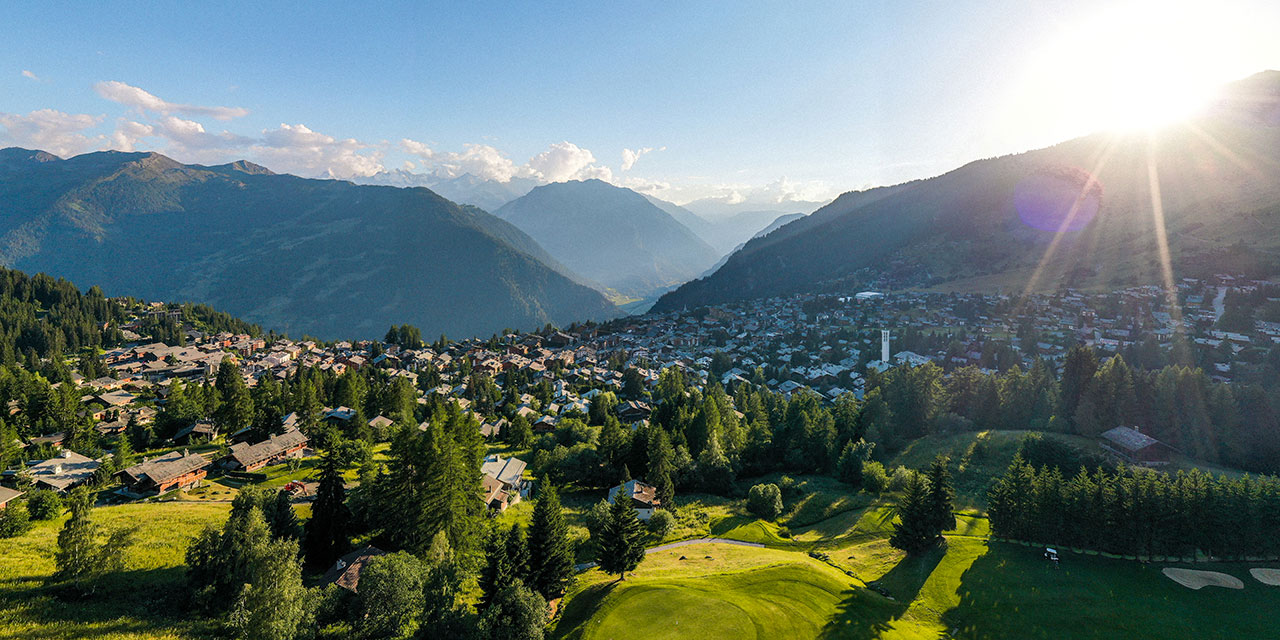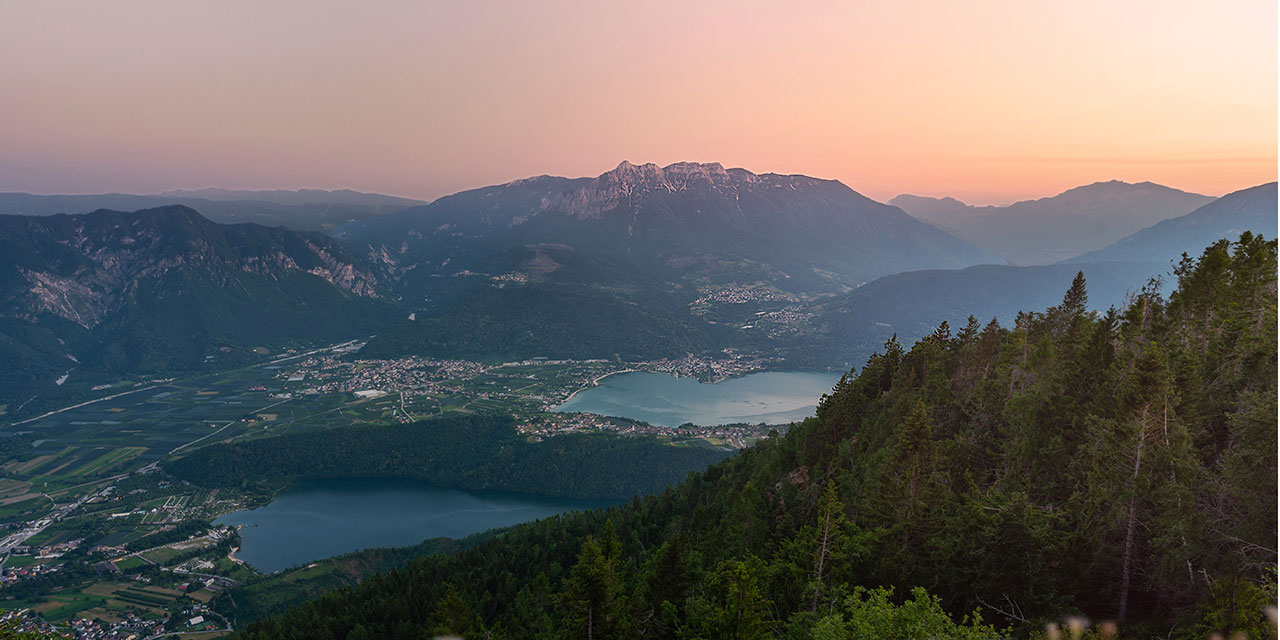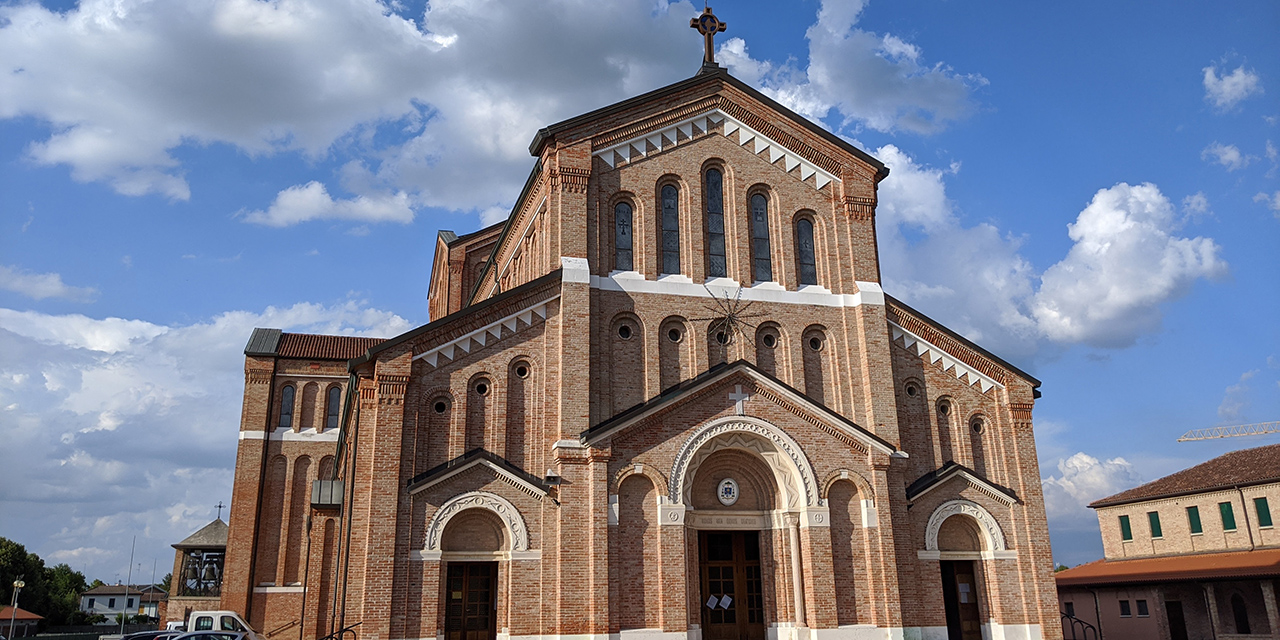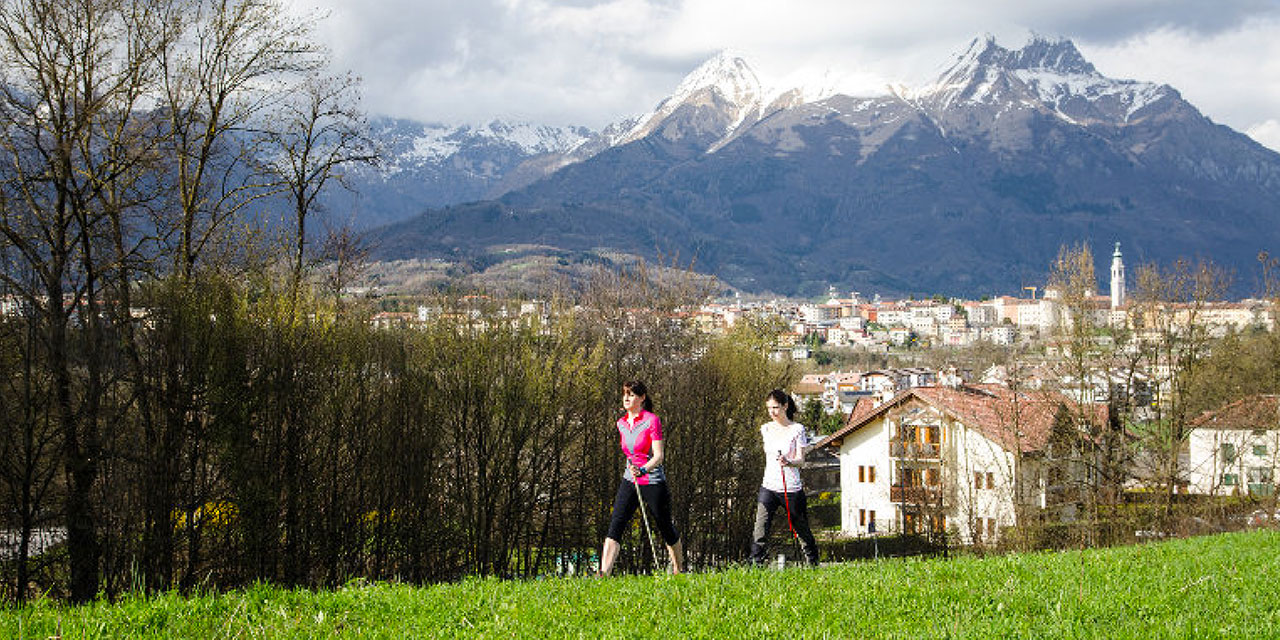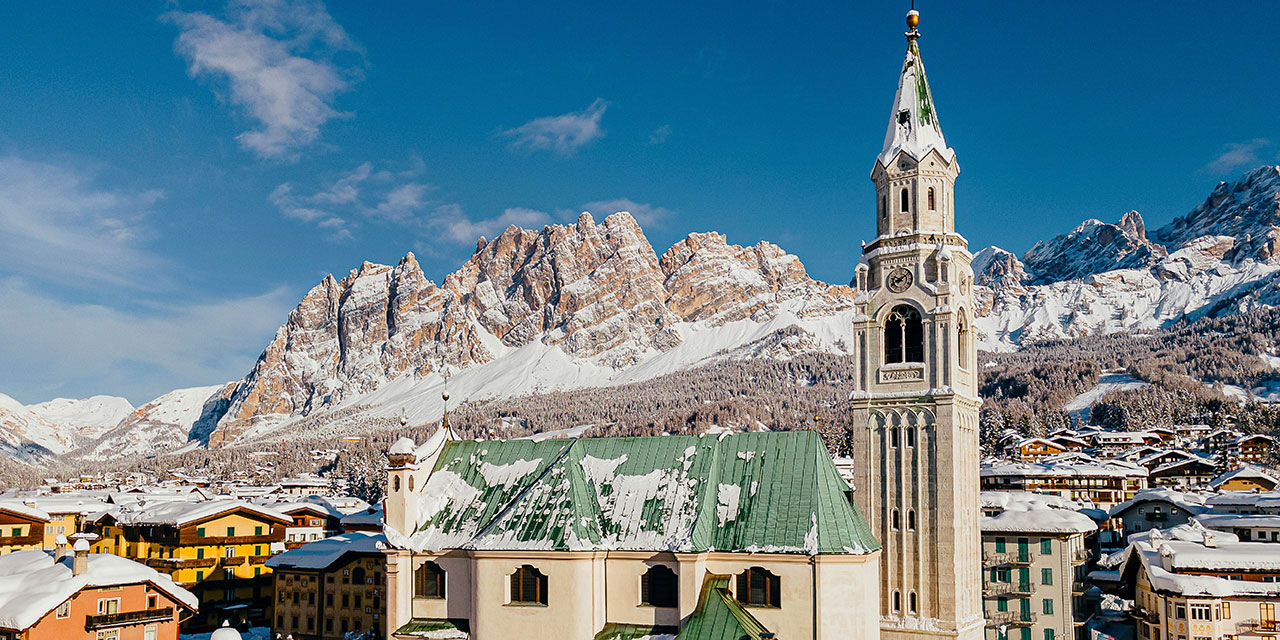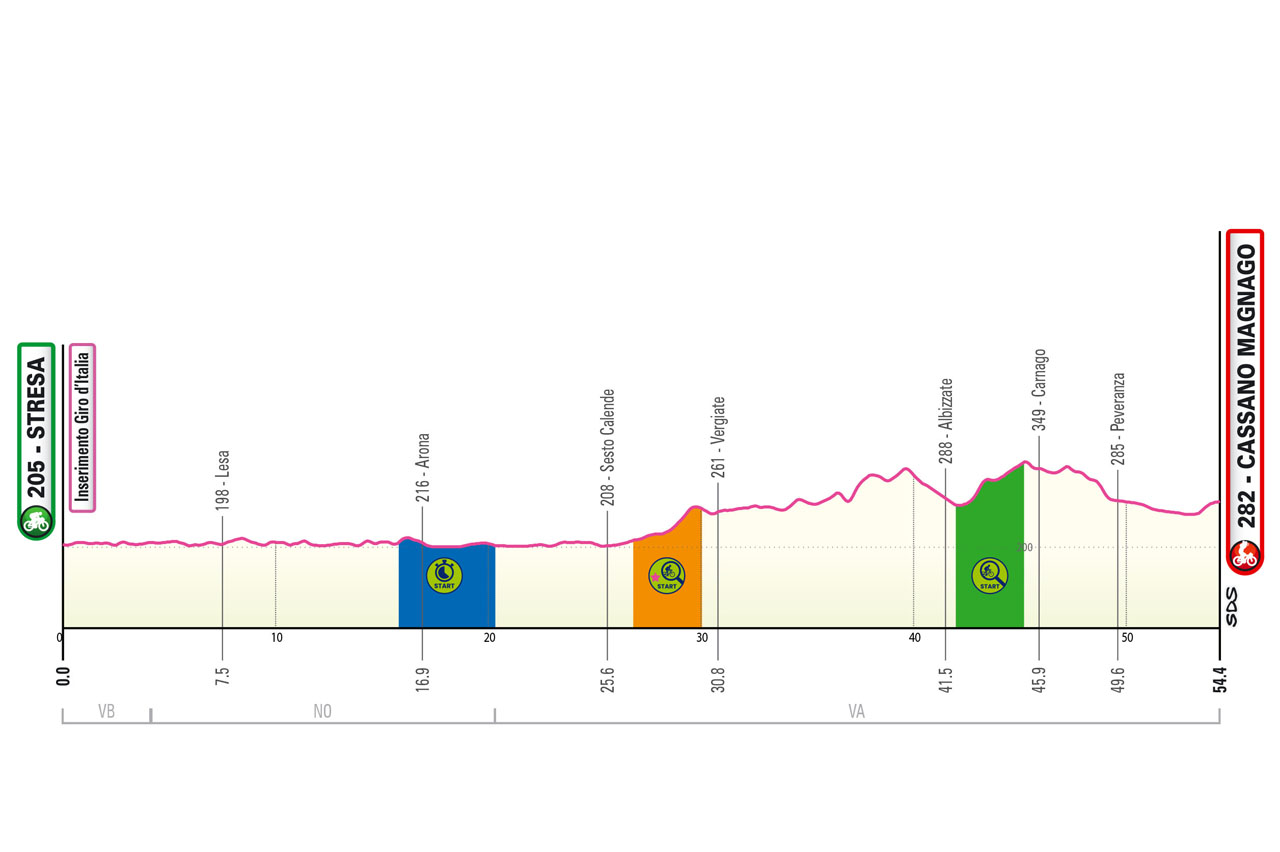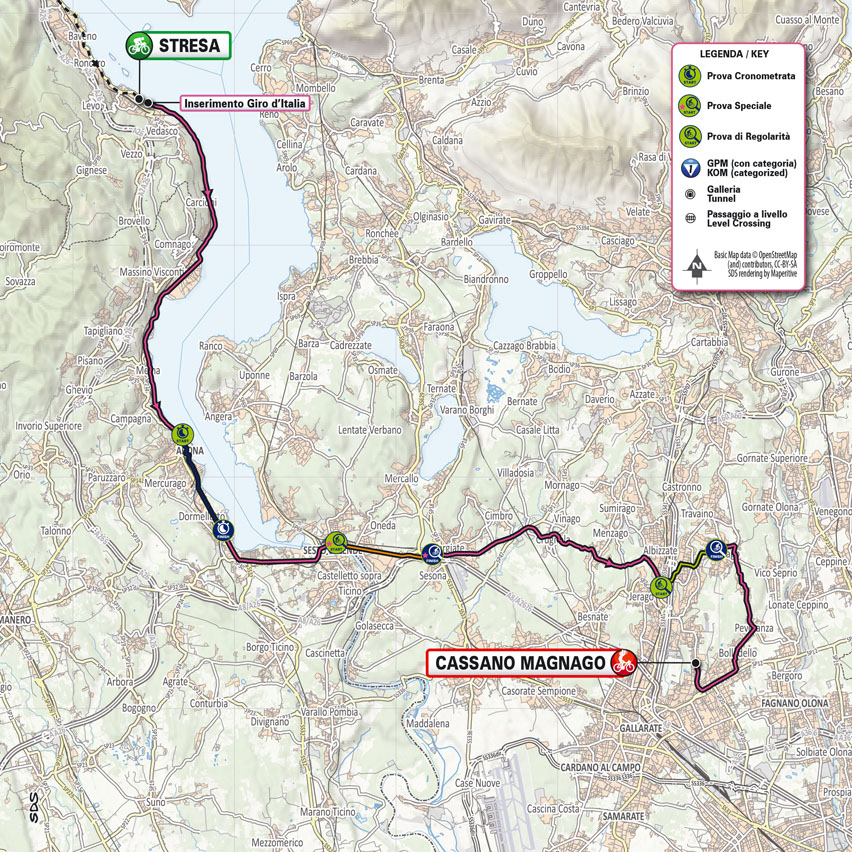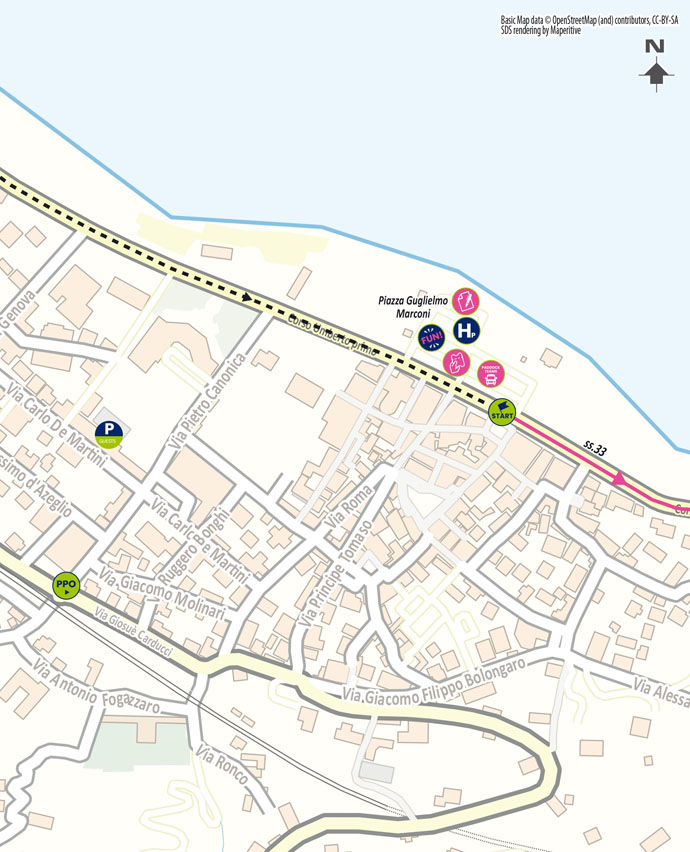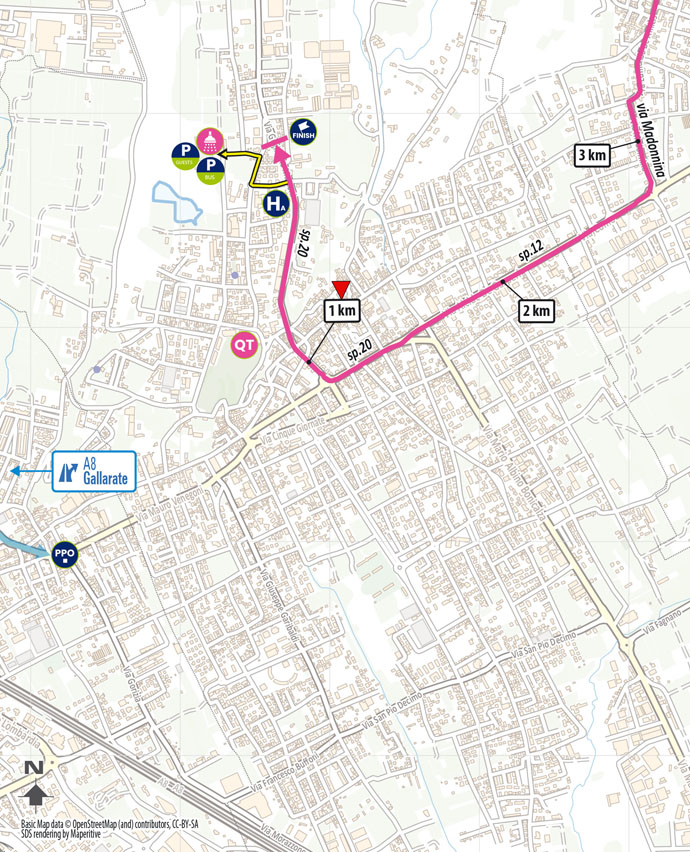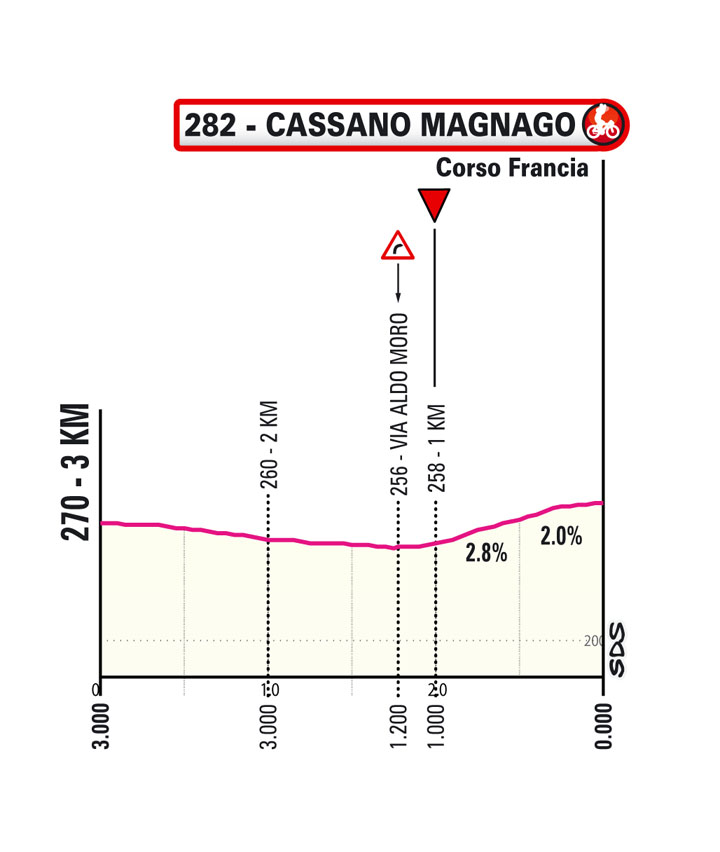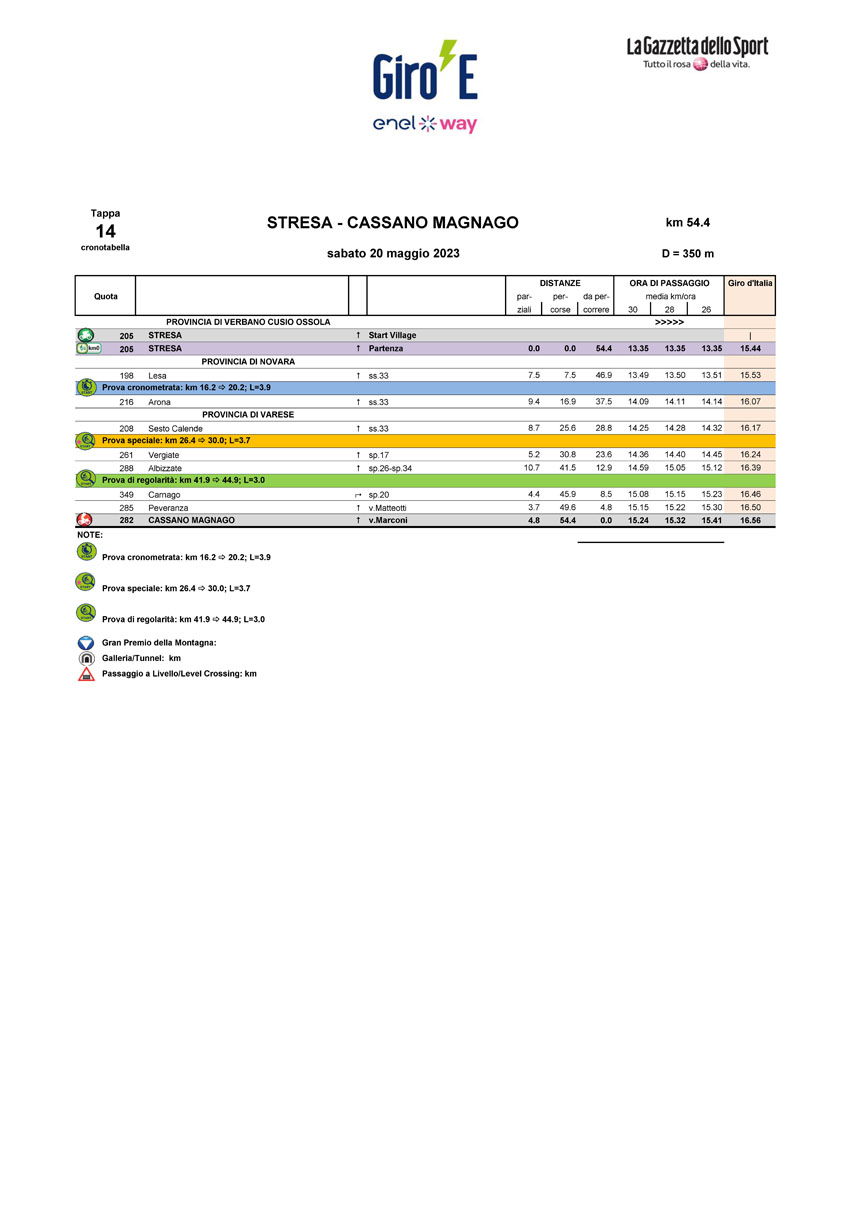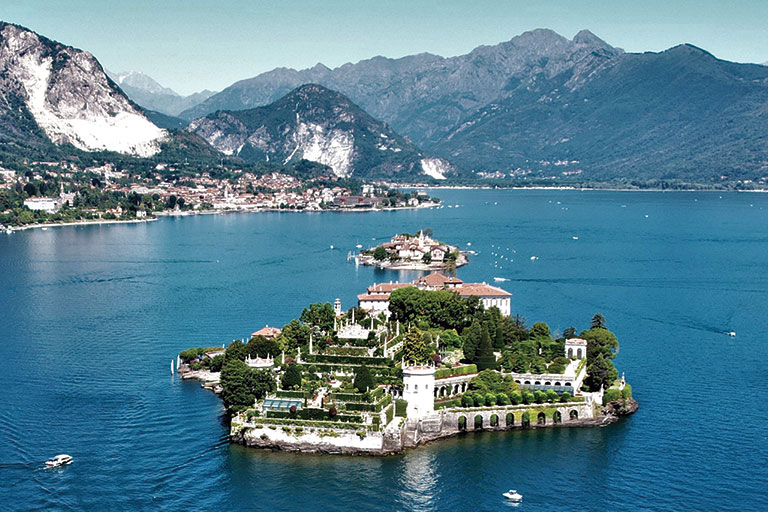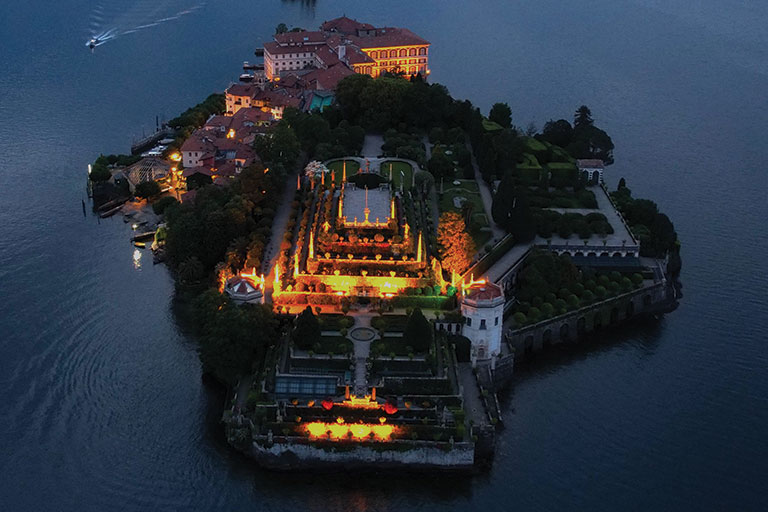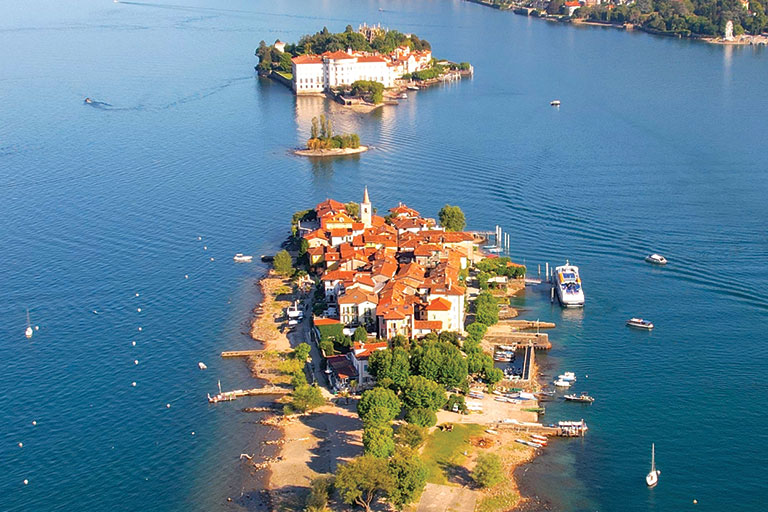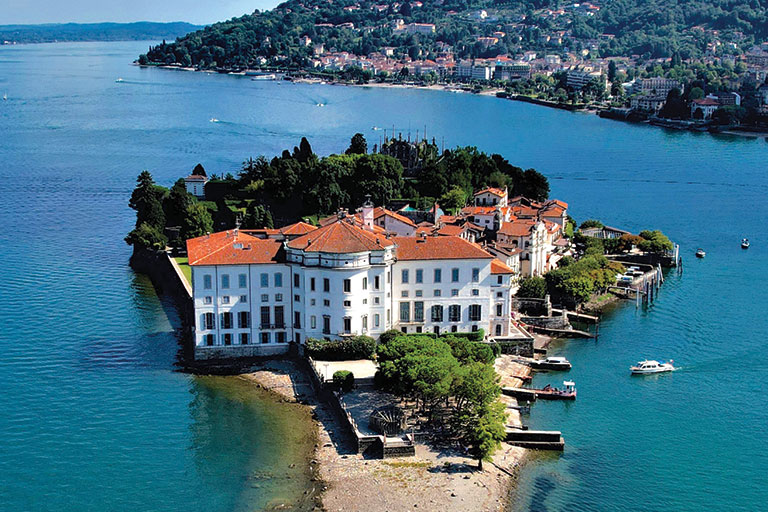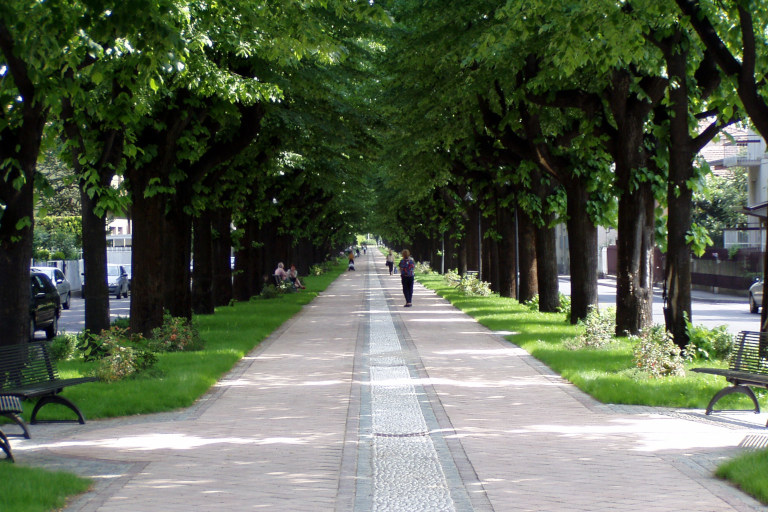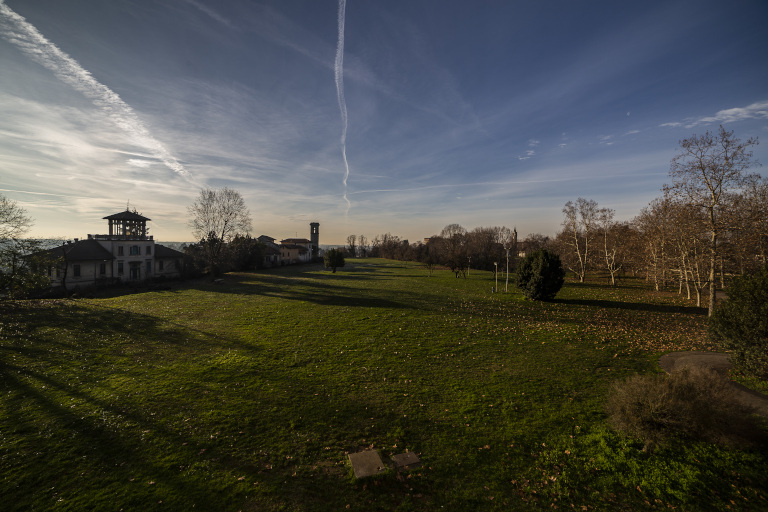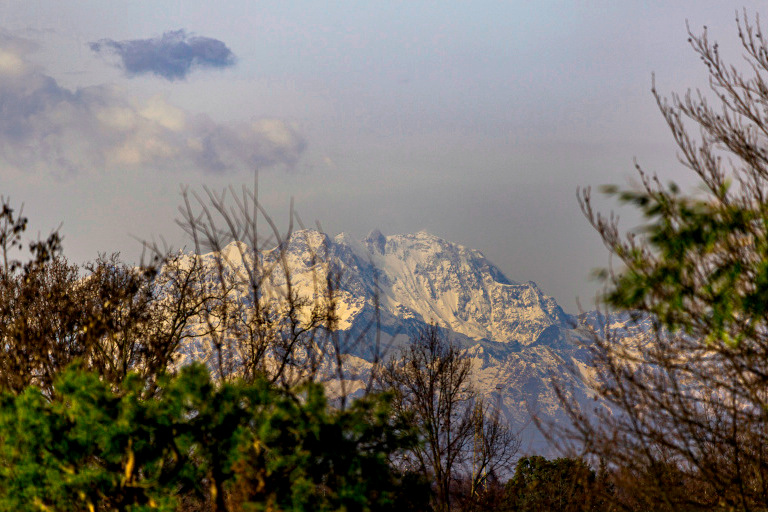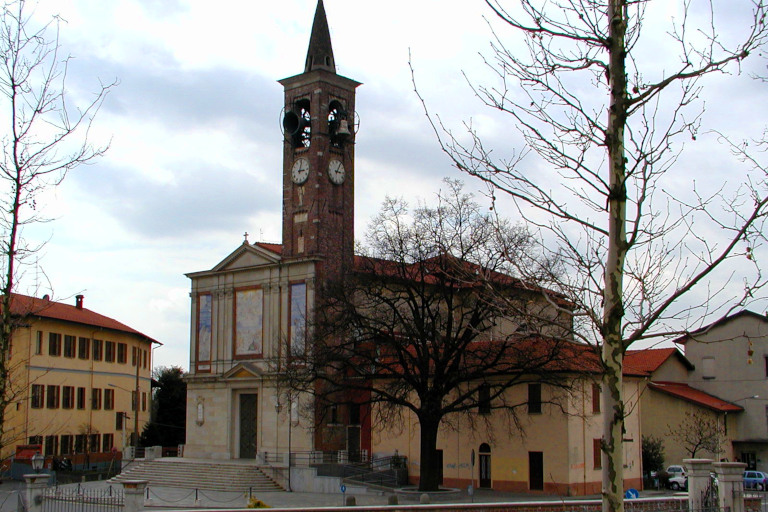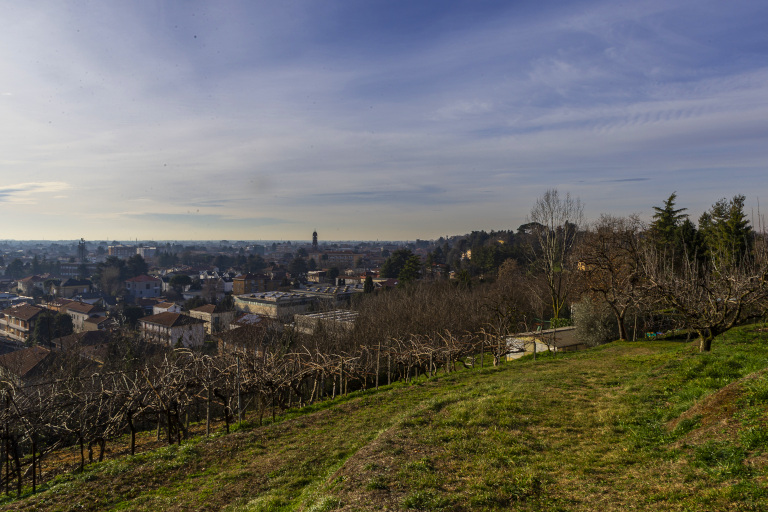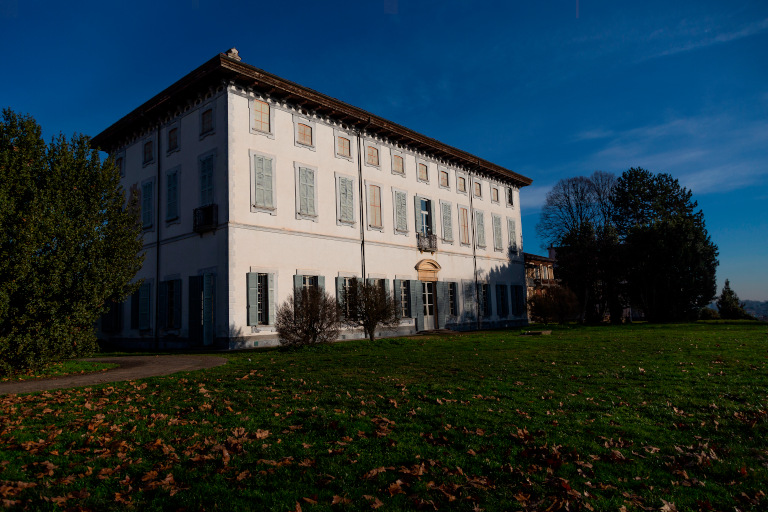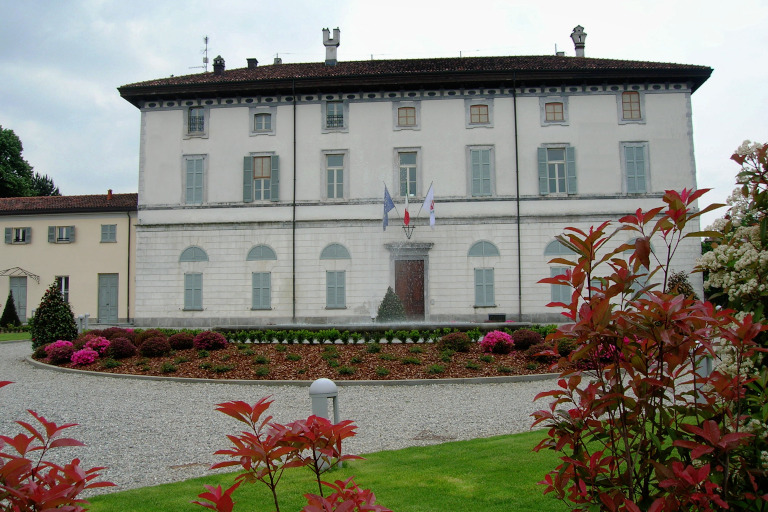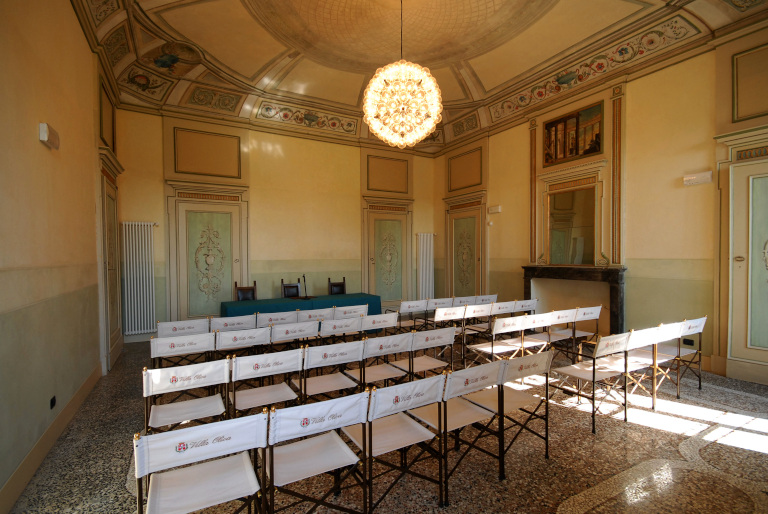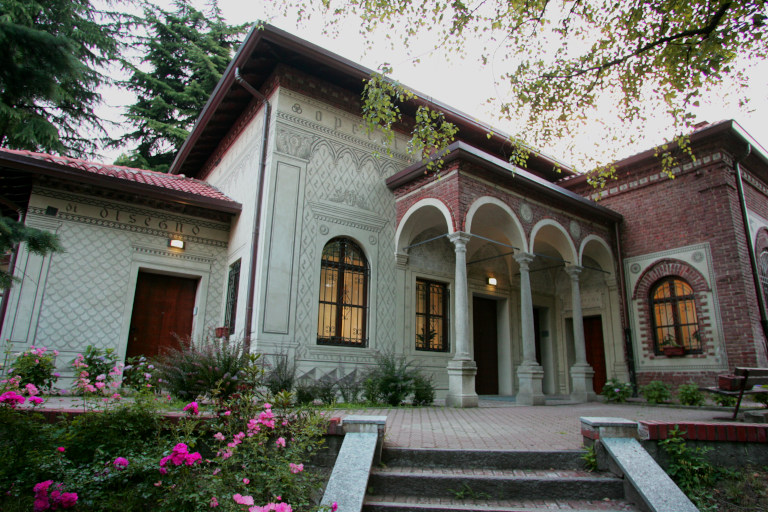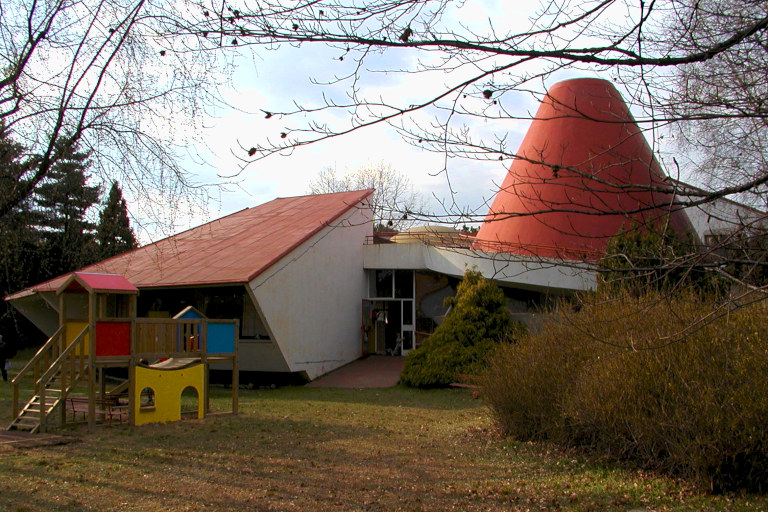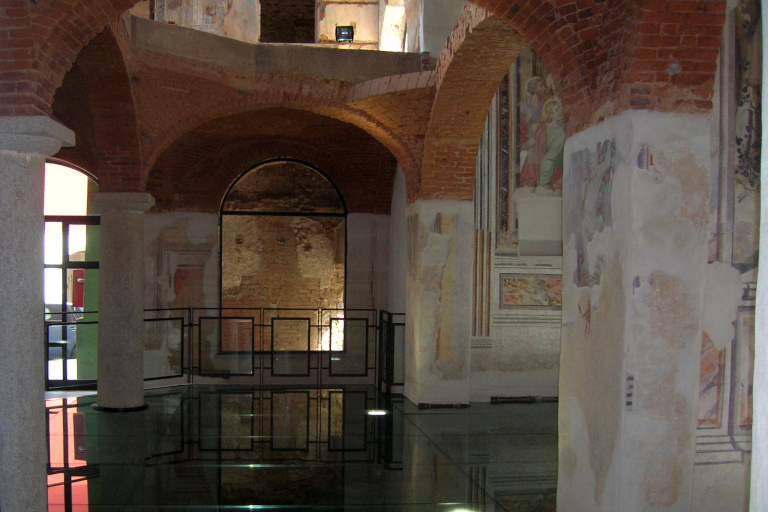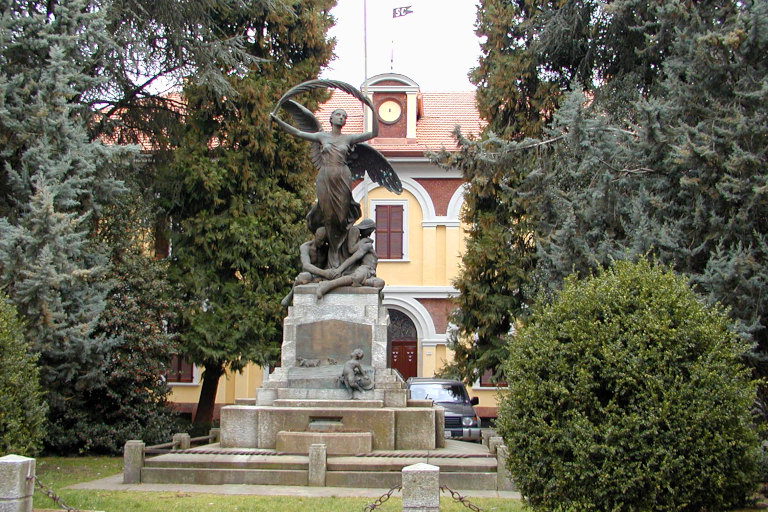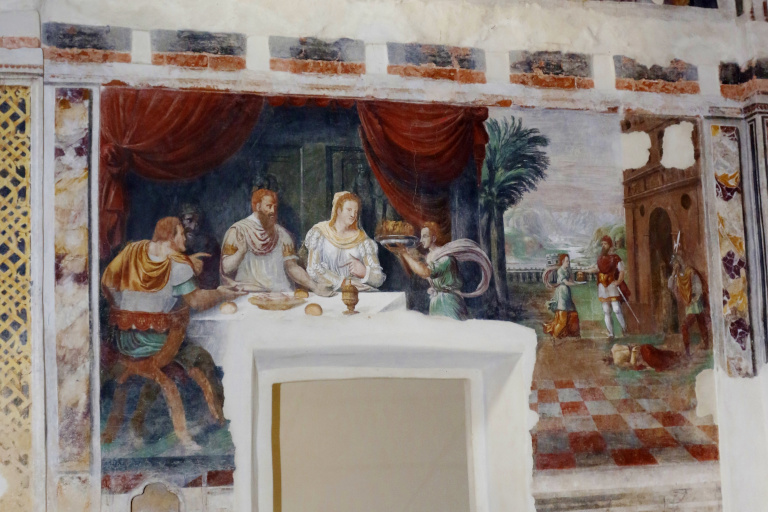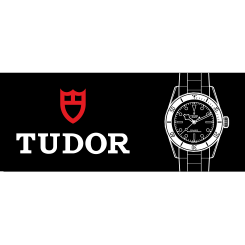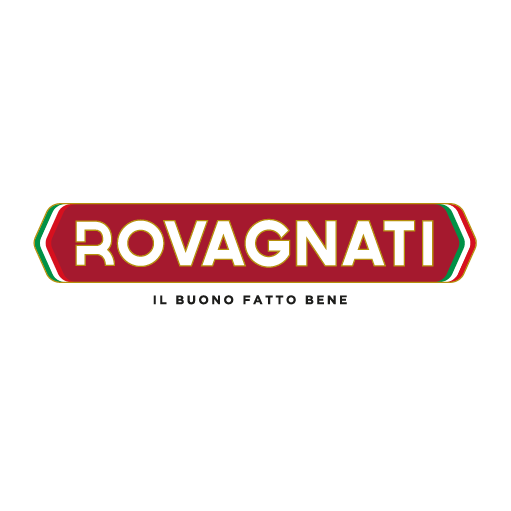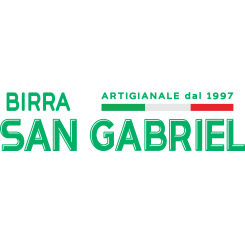profile
map
start / finish
final kilometres
itinerary timetable
tourist info
Host city:
STRESA
Touristic Information
Stre s a first appeared in documents in 998 and was under the jurisdiction of the Viscontis’ and the Borromei u ntil 100 years ago, w hen the presence of firstly the philosopher Rosmini, followed by the writer Manzoni and Elizabeth of Saxony (the duchess of Genova )), Stres a became better known. The opening of the Simplon Tunnel railway in 1906 brought Stres a international fame. The nearness to large centres such as Milan and Turin with their international airports, the convention centre and hotels unite modern facil i ties wi th a tradition of hospitality, gardens an ideal temperatures, mak e Stresa today one of the most renowned places in Italy.
Stresa’s territory offers h iking trails, mountain bike trails, water sport s and golf courses.
Gastronomy
L e Marghe r itine d i Stresa ” are the typical sweet of Stresa, biscuits produced in honor of Queen Margherita of Savoy. The gastronomic products of excellence are: rice, pasta, honey, Gorgonzola cheese, lake fish (Persic and Gardon) and Piedmontese meats, us in g ingred i ents fr om all over Italy.
Beverages
Careful selection of wines: Nebbiolo, Barbera, Boca Doc, Fara Doc, Sizzano Doc, Ghemme Docg, Erbaluce e Prünent.
Points of interest
Borromean Islands palaces and gardens: Isola Bella and Isola Madre, Fishermen’s island (typical village), Villa Pallavicino Park (with above 50 species of mammals and birds), Botanical Alpine garden, Mount Mottarone, Villa Ducale and Rosminian sites, Pietro Canonica museum, the Fishing museum Fishermen’s island, Andrea Ruffoni House and Museum – Fishermen’s island.
CASSANO MAGNAGO
Overview
Cassano Magnago is an Italian town of 21560 inhabitants in the Province of Varese in Lombardy and its land area has an altitude ranging from 242 m. to 321 m. above sea level. Cassano Magnago, originally “Cassiano Magniago”, was elevated to the rank of City after the Presidential Decree of 10th November 1997. The city has ancient origins, testified by the discovery of a cinerary urn attributable to the Golasecca Culture (from 1000 to 500 B.C.). The true symbol of Cassano Magnago is Saint Maurice Tower, dating back to the Late Roman Age, used as a signal tower and rebuilt as the bell tower of the church of the same name. The history of Cassano is the history of a territory which, without forgetting the old presence of the Visconti from the 18th century, began to host noble families from Milan and Gallarate as well as presenting archaeological, religious and naturalistic evidences represented by: Villa Oliva with Magana Park, Villa Buttafava, Visconti Castle, ex Church of Saint Julius, churches of Saint Mary, Saint Julius, Saint Peter, Saint Martin and Saint Anne, Remembrance Avenue, Oasi Boza e City Wood.
Food
I purscelitt da Cassan:
Typical good luck cake of Cassano Magnago, made in biscuit or marzipan, but strictly piglet-shaped.
It is said that Queen Teodolinda, passing through Saint Julius, didn’t meet a living soul except for a few piglets, the “purscelitt”, which rooted along the street. Struck by such manifest poverty, she took off the precious crown from her head and gave it to the Cassanesi, to get money to help the poor. From this legacy, the “Charity of the Crown Charity” would originate, with which the parish of Saint Julius supported the poor until the nineteenth century.
Chiscieau cunt i fig:
Leftover bread dough mixed with figs, raisins, sugar and butter
Frucch e maroch:
Sweets similar to amaretti, made of sugar and egg whites, whose name originates from the rivalry be-tween the inhabitants of the district of Saint Julius and those of Saint Mary.
Points of Interest
EX CHURCH OF SAN GIULIO
The ex-church of Saint Julius is the monument that sums up the entire history of the city, from the dawn of history to the XXI century. It was built on the ruins of a previous Late Roman structure, whose remains have been found, along with traces of a piling dating back to protohistoric, or even prehistoric, age. The church probably owes its origin to Saint Julius himself, a Greek priest of the 4th Century. The Late Roman building preceding the first church may have been a pre-Christian place of worship. On the ruins of the early medieval church, a second temple was built during the Renaissance. To pay the construction costs of the new church, in 1853, the millennial place of worship was sold to the Municipality, which transformed it into a Town hall. The municipal venue was transferred to Via Volta at the beginning of the 20th century, the building was used for other purposes, also becoming “Casa del fascio” (headquarter of the fascist party). Its singular character consists precisely in this continuous reuse. The frescoes that decorate the walls of the second church, well described in the deeds of the pastoral visit made by Cardinal Federico Borromeo in 1622, have been recovered. Of particular note is the valuable painting portraying Saint John the Baptist’s Beheading, preserved in the sacristy.
VILLA OLIVA
The villa was inhabited until 1775 by the Bossi family of Cassano Magnago and from 1775 to 1828 by the Agazzini family. From 1828 it was inhabited by the Oliva family, from which the villa takes its name, till 1963 when the last heir Pietro Oliva died. Upon his death the villa was donated to the Parish of Saint Mary of the Oak and subsequently purchased by the Municipality. At the beginning of the 90s renovation works began and restored its former glory.
Entering the main door we find the STAIRCASE OF EUROPE, so called for the fresco painted on the back wall, the “Abduction of Europa”; the GALLERY OF THE FOUR CROWNED MEN which leads directly to the garden; the CANDELSTICKS HALL built in the last quarter of the 18th century; the HALL OF HERCULES which is one of the most spectacular rooms in the villa, with a central rose window decorated with plants motifs: it is so called because four episodes from the life of Hercules are depicted there; the NORDIC LANDSCAPES HALL with floral motifs in shades of grey, green and brown; the LITTLE DAMES HALL commissioned by the Oliva family, with a coffered wooden roof with scrolls, shells, acanthus leaves and festoons; the HUNTER’S ROOM built in the 18th century. On the external walls of the villa there are TWO SUN CLOCKS made by the Bossi family in 1723.
CHURCH OF SANTA MARIA DEL CERRO
The church of Saint Mary of the Oak was built in 1280, year of its foundation by Ottone Visconti, who wanted it as the chapel of the nearby Visconteo Castle. Evidence of its ancientness is the beautiful bell tower, in Lombard Romanic style, the only primitive element after the transformation of the church, which took place in 1825. The building was lengthened westward by reversing the original orientation (with a west facade, today east). Inside the church there is the splendid Carrera organ, dating back to 1834, a jewel of local organ building art. The pride of the church is the valuable cycle of frescoes by Luigi Morgari and Aristide Secchi, painted between 1895 and 1905, which decorates every surface synthesizing figures and biblical themes up to the stories of the saints. Since 1570 the church guards the relic of the “Holy Thorn”, found by S. Carlo Borromeo near the castle, and attributed by the tradition to the crown that Christ wore on his head.


